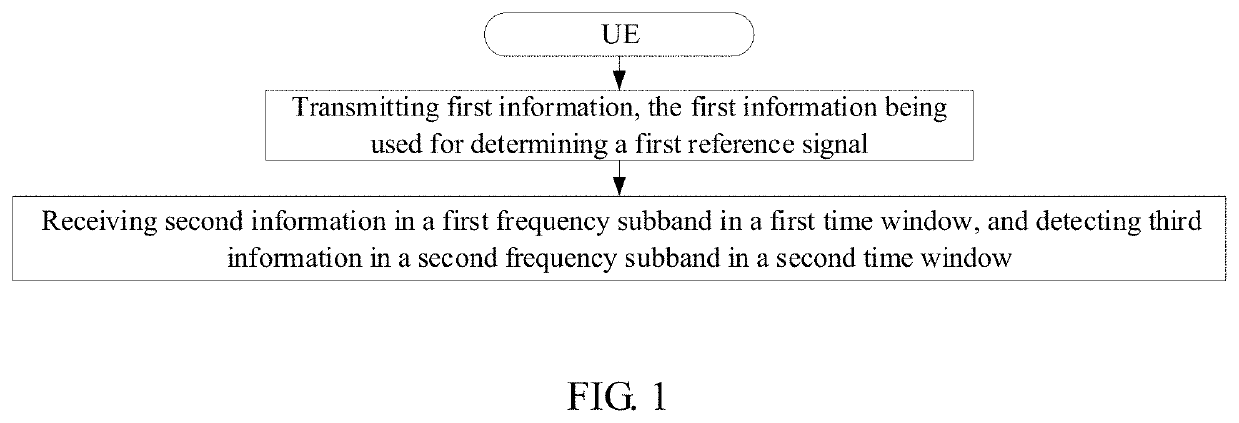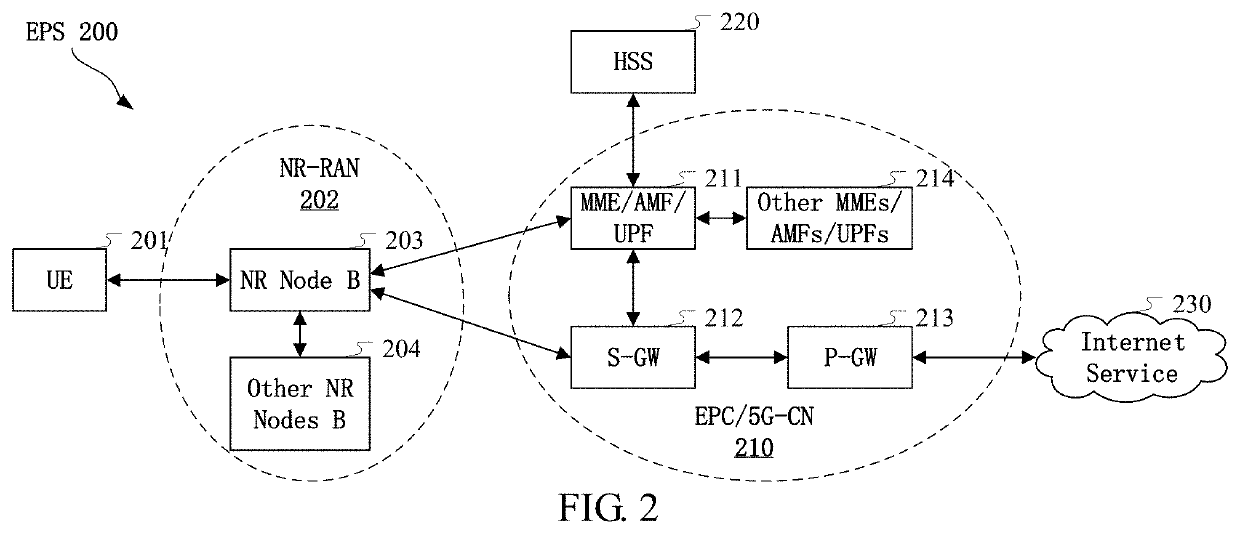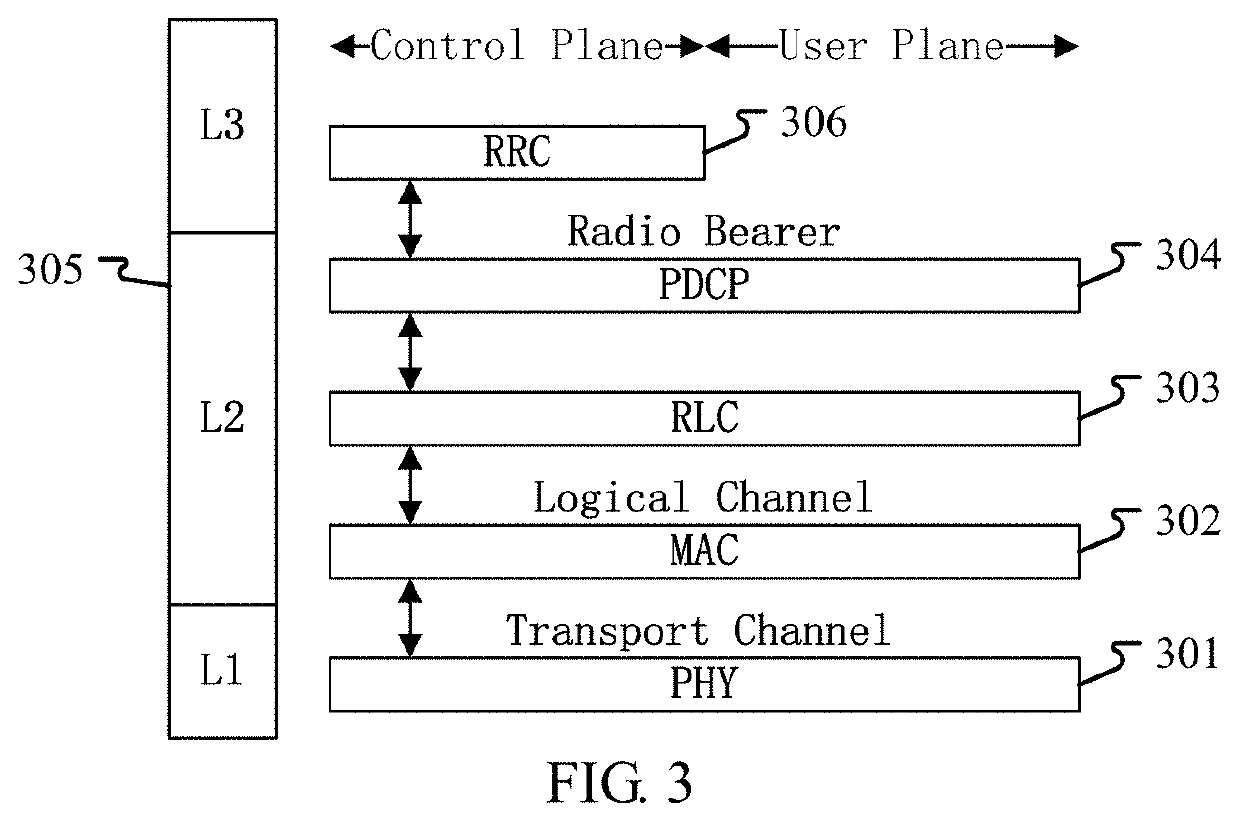Method and device in UE and base station for wireless communication
a wireless communication and wireless communication technology, applied in the direction of wireless communication, transmission path division, assessment restriction, etc., can solve the problems of high power consumption, increase in the time consumed by the br process, and complex u
- Summary
- Abstract
- Description
- Claims
- Application Information
AI Technical Summary
Benefits of technology
Problems solved by technology
Method used
Image
Examples
embodiment 1
[0075]Embodiment 1 illustrates an example of a flowchart of first information, as shown in FIG. 1.
[0076]In Embodiment 1, the UE in the disclosure first transmits first information, the first information being used for determining a first reference signal; then, the UE receives second information in a first frequency subband in a first time window and detects third information in a second frequency subband in a second time window; the first time window is related to time-domain resources occupied by the first information; the second time window is related to time-domain resources occupied by the first information, or, the second time window is related to time-domain resources occupied by the second information; a first antenna port is used for transmitting the first reference signal, each antenna port used for transmitting the second information is spatially related to the first antenna port, and each antenna port used for transmitting the third information is spatially related to th...
embodiment 2
[0126]Embodiment 2 illustrates an example of a diagram of a network architecture, as shown in FIG. 2.
[0127]Embodiment 2 illustrates an example of a diagram of a network architecture according to the disclosure, as shown in FIG. 2. FIG. 2 is a diagram illustrating a network architecture 200 of NR 5G, Long-Term Evolution (LTE) and Long-Term Evolution Advanced (LTE-A) systems. The NR 5G or LTE network architecture 200 may be called an Evolved Packet System (EPS) 200 or some other appropriate terms. The EPS 200 may include one or more UEs 201, a Next Generation-Radio Access Network (NG-RAN) 202, an Evolved Packet Core / 5G-Core Network (EPC / 5G-CN) 210, a Home Subscriber Server (HSS) 220 and an Internet service 230. The EPS may be interconnected with other access networks. For simple description, the entities / interfaces are not shown. As shown in FIG. 2, the EPS provides packet switching services. Those skilled in the art are easy to understand that various concepts presented throughout th...
embodiment 3
[0136]Embodiment 3 illustrates a diagram of an embodiment of a radio protocol architecture of a user plane and a control plane according to the disclosure, as shown in FIG. 3.
[0137]FIG. 3 is a diagram illustrating an embodiment of a radio protocol architecture of a user plane and a control plane. In FIG. 3, the radio protocol architecture of a UE and a base station (gNB or eNB) is represented by three layers, which are a Layer 1, a Layer 2 and a Layer 3 respectively. The Layer 1 (L1 layer) is the lowest layer and implements various PHY (physical layer) signal processing functions. The L1 layer will be referred to herein as the PHY 301. The Layer 2 (L2 layer) 305 is above the PHY 301, and is responsible for the link between the UE and the gNB over the PHY 301. In the user plane, the L2 layer 305 includes a Medium Access Control (MAC) sublayer 302, a Radio Link Control (RLC) sublayer 303, and a Packet Data Convergence Protocol (PDCP) sublayer 304, which are terminated at the gNB on th...
PUM
 Login to View More
Login to View More Abstract
Description
Claims
Application Information
 Login to View More
Login to View More - R&D
- Intellectual Property
- Life Sciences
- Materials
- Tech Scout
- Unparalleled Data Quality
- Higher Quality Content
- 60% Fewer Hallucinations
Browse by: Latest US Patents, China's latest patents, Technical Efficacy Thesaurus, Application Domain, Technology Topic, Popular Technical Reports.
© 2025 PatSnap. All rights reserved.Legal|Privacy policy|Modern Slavery Act Transparency Statement|Sitemap|About US| Contact US: help@patsnap.com



